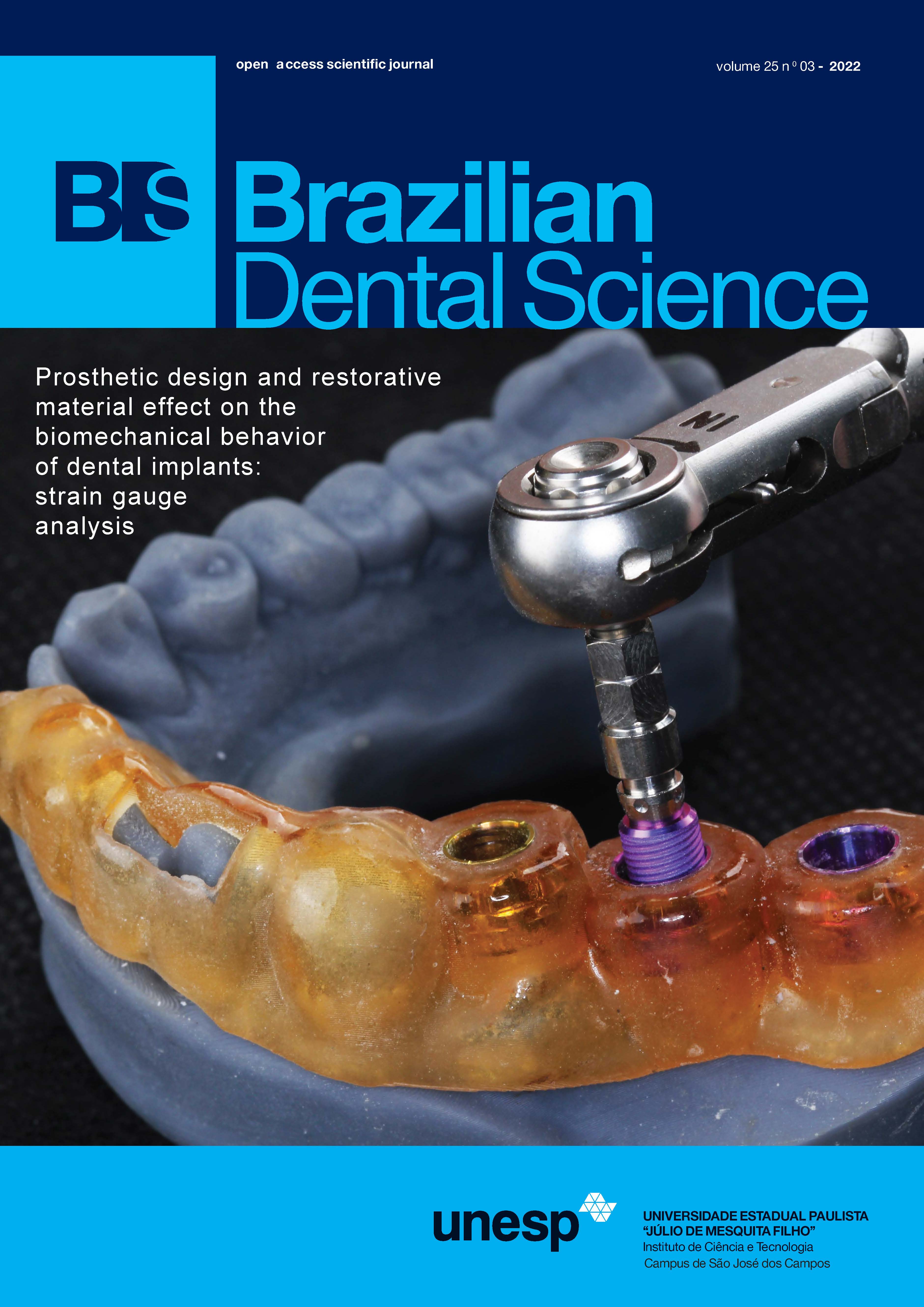Applications of diode laser in periodontal therapy – clinical guidelines and tips
DOI:
https://doi.org/10.4322/bds.2022.e2862Abstract
The diode lasers have become popular clinical tools because of their compact size, affordability, ease of use and
versatility. The aim of this paper is to put forth the various applications of a diode laser in day to day practice
and highlight the technical aspects of diode laser use for the same. This case series reports management of six
different clinical situations with diode laser namely – ankyloglossia, periodontal pocket, unequal gingival zeniths,
mucocele, dentinal hypersensitivity and hyper-pigmented gingiva. The patients were treated with 940 nm diode
laser with power settings from 0.5 W to 2 W depending on the case. The post-operative healing was uneventful in
most cases and favourable outcomes were observed. The diode laser offered surgical advantages like – dry field,
disinfection of surgical site and suture-less surgery. In addition, the authors observed better patient satisfaction
owing to minimal post-operative pain or swelling and immediate relief in case of dentinal hypersensitivity. This
paper presents both surgical and non-surgical applications of diode laser along with the technical aspects. Even
though the available literature does not lend substantial evidence for direct comparison of diode laser with
conventional techniques, it is safe to conclude that diode laser is an efficient tool for routine use in dentistry.
KEYWORDS
Laser therapy; Gingivectomy; Ankyloglossia; Periodontal pocket; Dentin sensitivity; Esthetics dental.
Downloads
Downloads
Published
How to Cite
Issue
Section
License
Brazilian Dental Science uses the Creative Commons (CC-BY 4.0) license, thus preserving the integrity of articles in an open access environment. The journal allows the author to retain publishing rights without restrictions.
=================




























